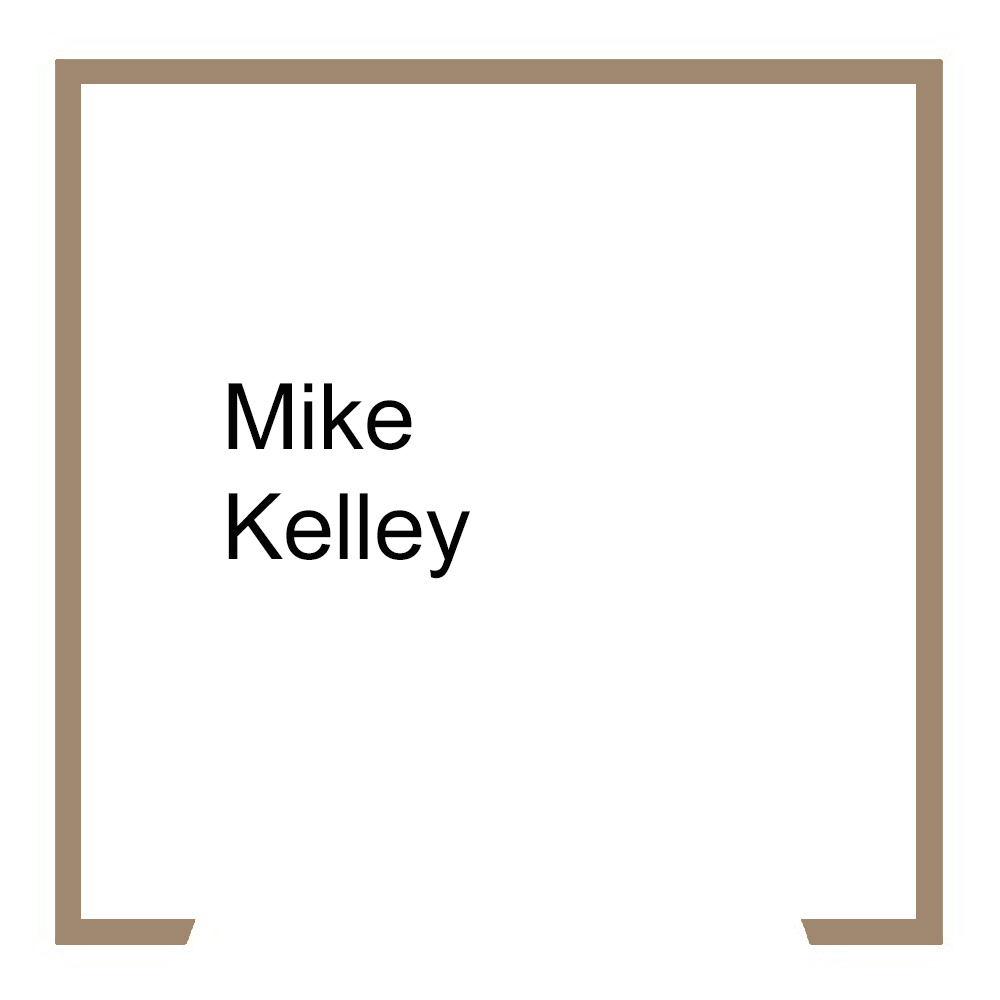United States of America, 1954

Born in Detroit, Michigan in 1954. Lives and works in Los Angele. Received a BFA from the University of Michigan, and an MFA from the California Institute of the Arts.
Kelley’s work ranges from highly symbolic and ritualistic performance pieces, to arrangements of stuffed-animal sculptures, to wall-sized drawings, to multi-room installations that restage institutional environments (schools, of ces, zoos), to extended collaborations with artists such as Paul McCarthy, Tony Oursler, and the band Sonic Youth. A critic and curator, Kelley writes for art and music journals and has organized numerous exhibitions incorporating his own work, work by fellow artists, and non-art objects that exemplify aspects of nostalgia, the grotesque, and the uncanny.
His work questions the legitimacy of ‘normative’ values and systems of authority, and attacks the sanctity of cultural attitudes toward family, religion, sexuality, art history, and education. He also comments on and undermines the legitimacy of the concept of victim or trauma culture, which posits that almost all behavior results from some form of repressed abuse. Kelley’s aesthetic mines the rich and often overlooked history of vernacular art in America, and his practice borrows heavily from the confrontational, politically conscious “by all means necessary” attitude of punk music.
“As an Artist I am interested in how, in different periods, various elements of this general mythology are focused upon and portrayed. What are the shifts in style? And what does that style reveal about the speci cs of a historical moment.” (Mike Kelley quoted in J. Welchman, I. Graw, A. Vidler, eds., Mike Kelley, London, 1999, p. 139)
“My work has always been concerned with symbolic overtones and how you can use these to produce collisions of meaning. It isn’t just about surface gloss, like Pop Art; it’s also about reception disruption. But to create that effect, you have to make people aware that there is a language operating. Otherwise they are just going to have a general reaction. I’m more interested in the complexities of the visual language. I like to play with the shifts of meaning within a genre.” (Mike Kelley quoted in ibid., p. 141)
His work is own in many public collections, like in Carnegie Museum, Pittsburgh, Centre Georges Pompidou, Paris, Detroit Institute of Art, Fundación “la Caixa”, Madrid, Metropolitan Museum of Art, New York, Museum of Contemporary Art, Chicago, Museum of Contemporary Art, Los Angeles, Whitney Museum of American Art, New York.
Selected solo exhibitions
Mike Kelley: Exploded Fortress of Solitude, Gagosian Gallery, London (2011) | Mike Kelley: Kandors, Museen Haus Lange. Haus Esters, Kunstmuseen Krefeld, Krefeld (2011) | Mike Kelley: Kandor 10 / Extracurricular Activity Projective Reconstruction #34,Kandor 12 / Extracurricular Activity Projective Reconstruction #35, Gagosian Gallery, Beverly Hills, (2011) | Mike Kelley: Arenas, Skarstedt Gallery, New York (2010) | Mike Kelley, Schinkel Pavillon, Berlin (2010) | Horizontal Tracking Shots, Gagosian Gallery, New York (2009) | Wako Works of Art, Tokyo (2009) | Mike Kelley: Selections from Kandors, Galerie Ghislaine Hussenot, Paris (2009) | Mike Kelley: A Selection of Photo Editions,Patrick Painter Editions, Santa Monica (2009) | Educational Complex Onwards 1995 – 2008, Wiels Centre d’Art Contemporain, Brussels (2008) | Sammlung Goetz, Munich (2008) | Kandor-Con 2000, Jablonka Gallery, Berlin (2007) | Profondeurs Vertes, Musée du Louvre, Paris (2006) |Liquid Diet and Related Works, Galerie Ghislaine Hussenot, Paris (2006) | Medium, St. Bathélemy, French West Indies, (2006) | Day Is Done, Gagosian Gallery, New York, (2005) | Mike Kelley: The Uncanny, Tate Liverpool, Liverpool (2004) | Museum Moderner Kunst Stiftung Luwig Wien, Vienna (2004) | Memory Ware, Wood Grain, Carpet, Galleria Emi Fontana, Milan (2003) | Sod and Sodie Sock (w/Paul McCarthy) Biennale d’art contemporain de Lyon, Institut d’art contemporain, Lyon (2003) | | The Poetics Project 1977-1997 (w/ Tony Oursler), The Curve, Barbican Centre, London (2002).